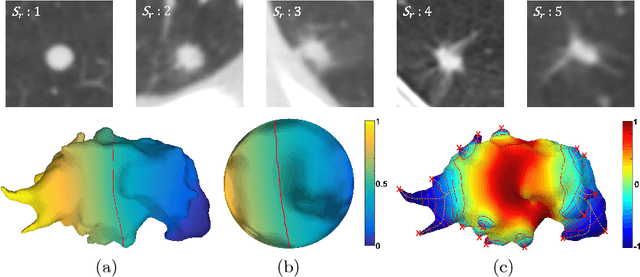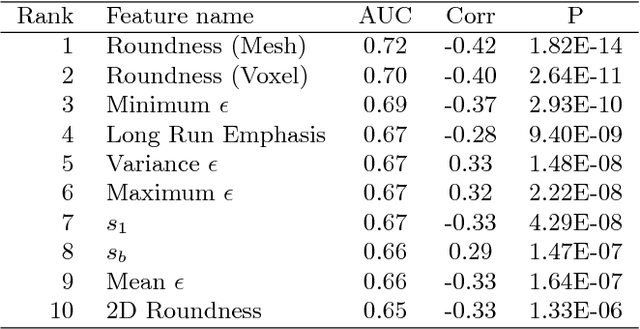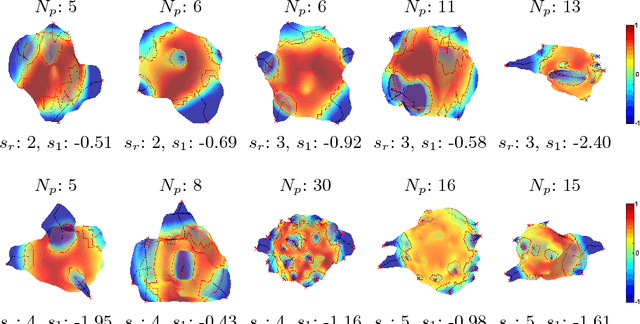Sadegh Riyahi
Comparison of Patch-Based Conditional Generative Adversarial Neural Net Models with Emphasis on Model Robustness for Use in Head and Neck Cases for MR-Only planning
Feb 27, 2019



Abstract:A total of twenty paired CT and MR images were used in this study to investigate two conditional generative adversarial networks, Pix2Pix, and Cycle GAN, for generating synthetic CT images for Headand Neck cancer cases. Ten of the patient cases were used for training and included such common artifacts as dental implants; the remaining ten testing cases were used for testing and included a larger range of image features commonly found in clinical head and neck cases. These features included strong metal artifacts from dental implants, one case with a metal implant, and one case with abnormal anatomy. The original CT images were deformably registered to the mDixon FFE MR images to minimize the effects of processing the MR images. The sCT generation accuracy and robustness were evaluated using Mean Absolute Error (MAE) based on the Hounsfield Units (HU) for three regions (whole body, bone, and air within the body), Mean Error (ME) to observe systematic average offset errors in the sCT generation, and dosimetric evaluation of all clinically relevant structures. For the test set the MAE for the Pix2Pix and Cycle GAN models were 92.4 $\pm$ 13.5 HU, and 100.7 $\pm$ 14.6 HU, respectively, for the body region, 166.3 $\pm$ 31.8 HU, and 184 $\pm$ 31.9 HU, respectively, for the bone region, and 183.7 $\pm$ 41.3 HU and 185.4 $\pm$ 37.9 HU for the air regions. The ME for Pix2Pix and Cycle GAN were 21.0 $\pm$ 11.8 HU and 37.5 $\pm$ 14.9 HU, respectively. Absolute Percent Mean/Max Dose Errors were less than 2% for the PTV and all critical structures for both models, and DRRs generated from these models looked qualitatively similar to CT generated DRRs showing these methods are promising for MR-only planning.
Interpretable Spiculation Quantification for Lung Cancer Screening
Sep 01, 2018



Abstract:Spiculations are spikes on the surface of pulmonary nodule and are important predictors of malignancy in lung cancer. In this work, we introduced an interpretable, parameter-free technique for quantifying this critical feature using the area distortion metric from the spherical conformal (angle-preserving) parameterization. The conformal factor in the spherical mapping formulation provides a direct measure of spiculation which can be used to detect spikes and compute spike heights for geometrically-complex spiculations. The use of the area distortion metric from conformal mapping has never been exploited before in this context. Based on the area distortion metric and the spiculation height, we introduced a novel spiculation score. A combination of our spiculation measures was found to be highly correlated (Spearman's rank correlation coefficient $\rho = 0.48$) with the radiologist's spiculation score. These measures were also used in the radiomics framework to achieve state-of-the-art malignancy prediction accuracy of 88.9% on a publicly available dataset.
Quantification of Local Metabolic Tumor Volume Changes by Registering Blended PET-CT Images for Prediction of Pathologic Tumor Response
Aug 24, 2018



Abstract:Quantification of local metabolic tumor volume (MTV) chan-ges after Chemo-radiotherapy would allow accurate tumor response evaluation. Currently, local MTV changes in esophageal (soft-tissue) cancer are measured by registering follow-up PET to baseline PET using the same transformation obtained by deformable registration of follow-up CT to baseline CT. Such approach is suboptimal because PET and CT capture fundamentally different properties (metabolic vs. anatomy) of a tumor. In this work we combined PET and CT images into a single blended PET-CT image and registered follow-up blended PET-CT image to baseline blended PET-CT image. B-spline regularized diffeomorphic registration was used to characterize the large MTV shrinkage. Jacobian of the resulting transformation was computed to measure the local MTV changes. Radiomic features (intensity and texture) were then extracted from the Jacobian map to predict pathologic tumor response. Local MTV changes calculated using blended PET-CT registration achieved the highest correlation with ground truth segmentation (R=0.88) compared to PET-PET (R=0.80) and CT-CT (R=0.67) registrations. Moreover, using blended PET-CT registration, the multivariate prediction model achieved the highest accuracy with only one Jacobian co-occurrence texture feature (accuracy=82.3%). This novel framework can replace the conventional approach that applies CT-CT transformation to the PET data for longitudinal evaluation of tumor response.
 Add to Chrome
Add to Chrome Add to Firefox
Add to Firefox Add to Edge
Add to Edge